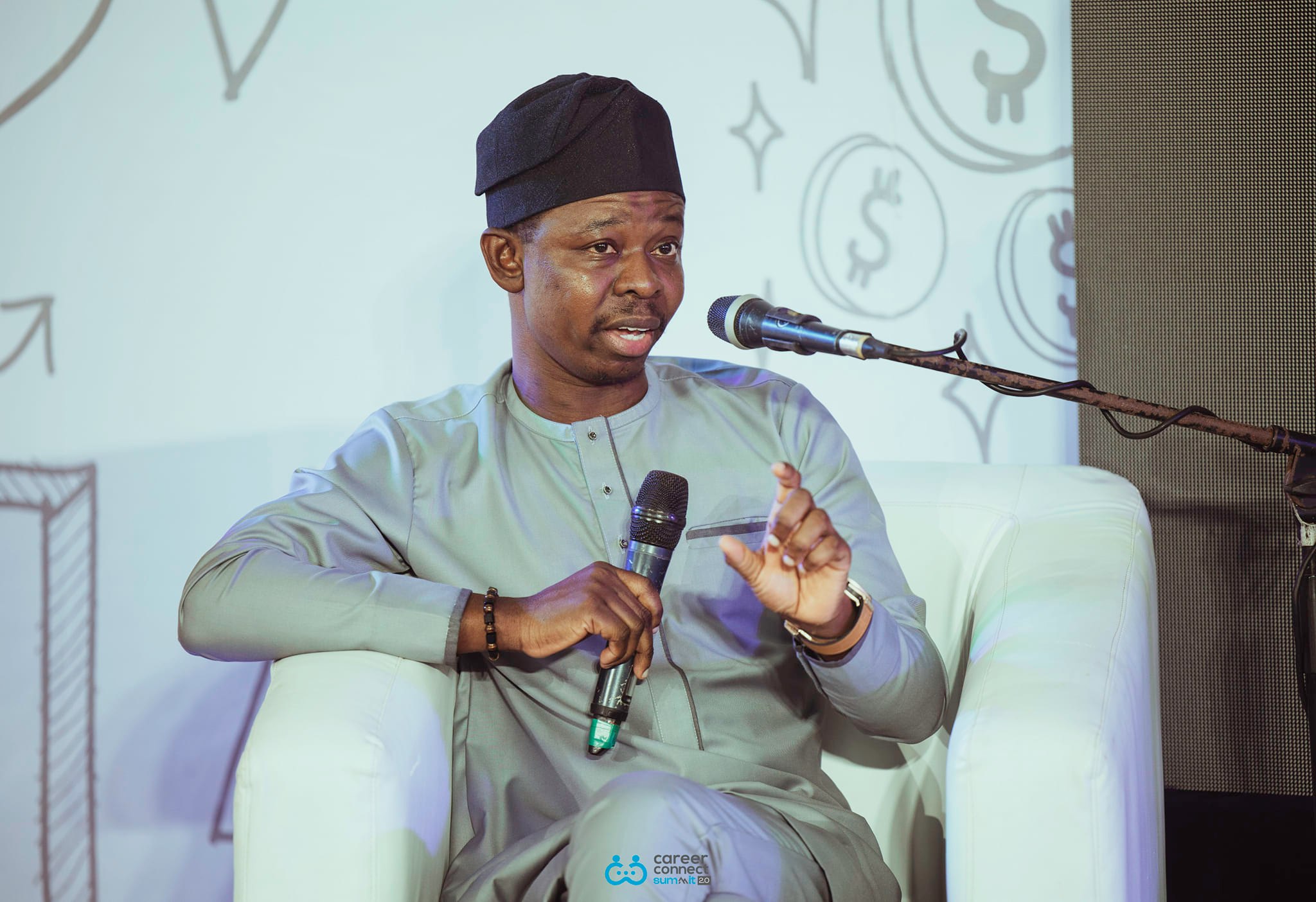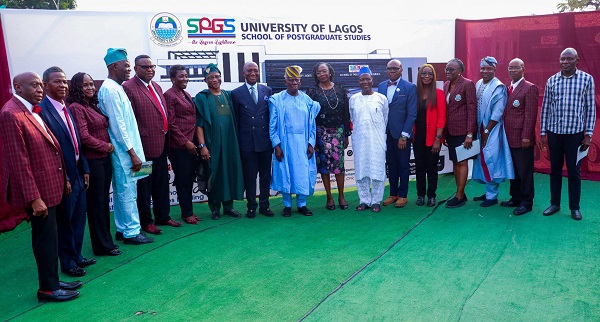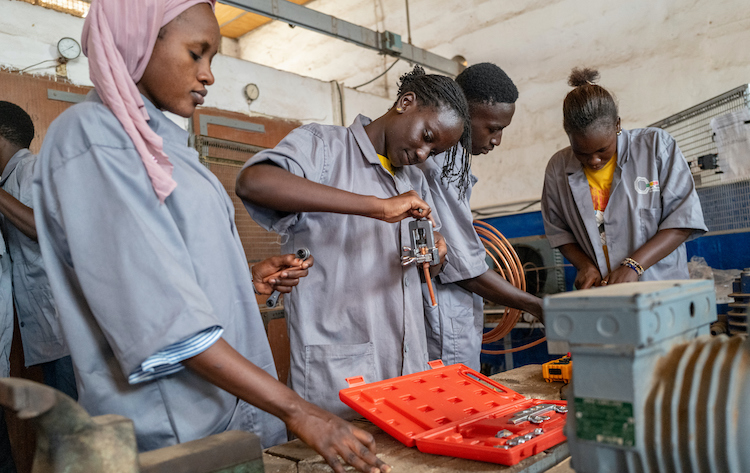Welcome to the 10-episode series on my shocking experience as a millennial lecturer teaching Gen-Z students in a Federal University in Nigeria in the last 12 years.
It’s a collection of my classroom interactions with a generation of quick-witted, internet-savvy young adults who are “too bold” for their own good. Read episode 3 here.
____________________________
In Mid 2023, I was teaching an undergraduate class and in my usual tradition, I love to use recent events or relatable stories to further drive home my points.
On this particular day, I was teaching a course about life under water so I talked about the electric eel, whale, shark, octopus etc. I used the opportunity to ask if they have seen the animation movie, “Shark Tale”, and I was glad more than 50% of the class had seen the animation and could relate immediately.
I used accounts from the animation to explain how acquatic organisms live in strata as you move vertically to the substratum of the ocean. Imagine that the ocean is designed as multiple floors like a skyscraper, where fishes who live on the 56th floor may not be able to thrive on the 10th floor due to the pressure at such depths.
This implies that smaller fishes who can survive the 5th floor will be able to evade the bigger predatory fishes who live on the 40th floor by swimming downwards to depths that discourage the bigger fishes to keep pursuing. The class was quite lively and the animation example helped me explain this complex behaviour of fishes so easily.
So I decided to make reference to the fact that man has built machines that travel to the depth of the ocean to study these deep sea creatures. Then I narrated the recent story (at the time) of a submersible which imploded in the North Atlantic sea, killing 5 people onboard including the Founder of the company (OceanGate) that built the underwater craft.
As I was talking about the event, I could see the students nodding in agreement that they followed the story online and had a good idea of what I was talking about.
This exicted me, so I decided to ask: “I am glad most of you are aware of the OceanGate saga and the tragic implosion of its submersible which killed their Founder and CEO. So here is my question: What is the difference between a Submersible and a Submarine?”
The class was suddenly thrown into total silence.
I could see some students looking CLUELESS, some making faces like they were trying to THINK, and others secretly PRESSING THEIR PHONES trying to ask Google for help.
“No attempt? Someone should just try. The worst that can happen is that you will fail the question but you would learn at the end of the day. So please try”, I encouraged them to speak.
So one of the “thinking ones” decided to try. “Sir, I think a Submersible stays under water only, while the Submarine can stay under water and also come to the surface.”
“That’s a good attempt but not exactly”.
Then I saw some of the “clueless ones” laughing at him for getting it wrong.
I had to interject, “Oh so you guys think you can make jest of him for making an effort when you all looked completely clueless when I first asked the question. Does that sound right to you?”
The classroom was quiet once again.
“Anybody else wishes to try?”
Then one of the “phone-pressing ones” raised his hand.
“Yes, go ahead”
“A submersible is an underwater vehicle which cannot be operated without communicating with a mother ship usually at the surface while a submarine is capable of independent underwater movement and can stay longer at depth.”
“Absolutely spot on! But tell the truth. Google helped you out, right?”
His eyes were suddenly twitching like he was about to lie.
“Don’t lie to me o. I actually saw you pressing your phone behind that girl sitting in front of you.”
Then he smiled in a caught-in-the-act manner and finally admitted that he had turned to Google for help.
So I took the opportunity to advise them: “Some of you would have gotten the answer only if you decided to think deeper. Google was not invented to make man mentally lazy. It is expected to aid your learning but not to help you think.
So next time, think first. Exhaust your thought options before venturing to Google. As soon as I asked the question, some of you grabbed your phones and asked Google almost immediately without even making any attempt to think. That is not cool if you consider yourselves as intellectual beings.”
As the lecture continued, I decided to make another reference to the continents of the world. So I asked, “how many continents do we have?” “Seven, sir”, they responded unanimously.
“That’s great. What are they?”
“Africa, Asia, North America, South America, Europe, Antarctica and…..”, one of the students made an attempt but couldn’t remember the last one.
“Who wants to help her?”
“Australia!”, one of her colleagues yelled out.
“But Australia is a country and not a continent”, I responded.
He looked confused at first, then replied, “I know sir, but it is also a continent.”
“How can a country be a continent?”
Finally he said in guilt, “ermmm but sir, that’s what Google told me”.
“Chai. We are back to this Google again. I thought I told you guys not to use Google when you are supposed to be engaging your brain cells.”
I went further, “Actually, you are correct. I was just trying to see if you are confident about your answer. I am only disappointed that you started mentioning Google again. However, yes, Australia is both a country and a continent. In fact, it is the smallest continent on Earth with 23 small islands including Mainland Australia (the nation), Tasmania and the Islands of New Guinea.”
Most young people these days have a short attention span. This means that if a Lecturer doesn’t want his/her students to lose interest within 20 mins of a class, it is important for such a lecturer to switch from time-to-time to relatable stories or recent events to spice up learning and reactivate their attention.
Anytime I switch to interesting stories to spice up the learning experience, I often see my students’ chins raised and their faces light up! I will have their attention for another 20 mins before thinking of “recharging them” with a new relatable story to buttress my teachings.
I employ any trending story to make my point and to give my students a sense of belonging that learning is participatory and not only instructive. For example, I have spoken about Asake’s dress sense, Hilda Baci’s Guinness World Record, and even Jadrolita’s AI demonstrations. However, to do any of these, one must be current; I mean, very current.
This teaching method makes classes to be interesting and engaging, and the students are most likely going to remember what you taught them because they will link it to a relatable story shared. This is exactly why I can teach for 3 hours and still have my students full attention.
Millennial lecturers must make tremendous efforts to make learning fun, especially in this age with lots of distractions.
What is most worrisome is the way and manner these Gen-Z students generally utilise Google for almost everything. They even expect Google to “think” for them. They have too much access to technology that it can eventually become a learning barrier. Therefore, helping them regulate this access is essential for innate learning.
Also, understanding that most of these students have access to their phones and may even be confirming some of the things lecturers say in class in real-time, indicates the need for lecturers, as custodians of knowledge, to become lifelong learners.
Learning new perspectives, updating your knowledge and keeping abreast with new trends are extremely important especially now that we have generally smarter students who can spot mediocrity quickly.
It takes some amount of passion for teaching, for a lecturer to be empathetic about improving the learning experience of his students.
Dear Millennial Lecturers, there is a correlation between learning experience and learning outcomes; let’s make learning more fun to get the best out of our students.
I hope you enjoyed Episode 4?
Watch out for Episode 5.











